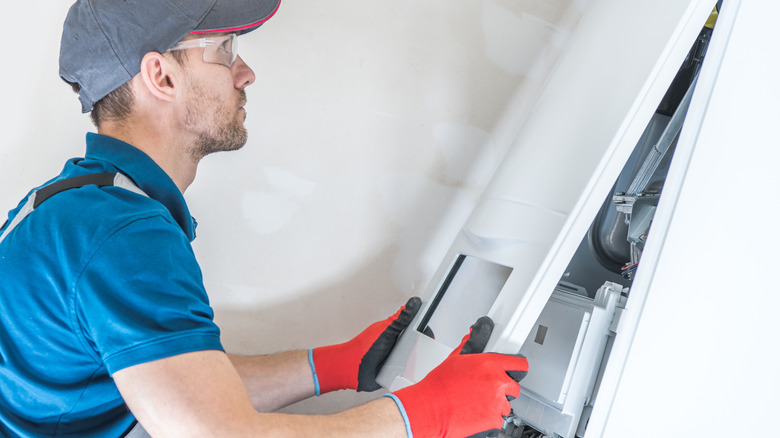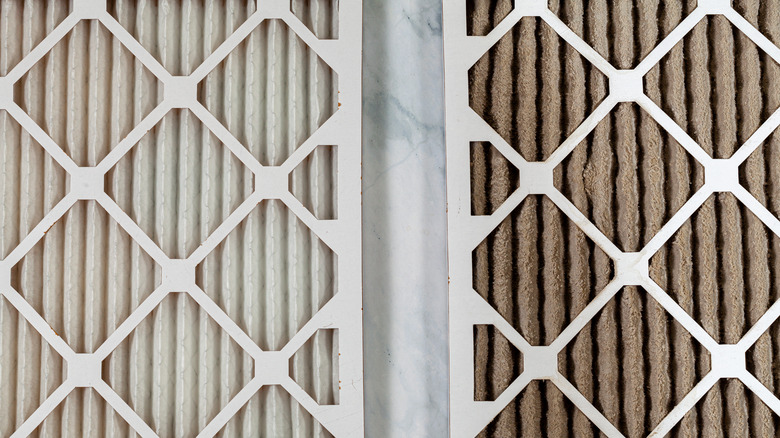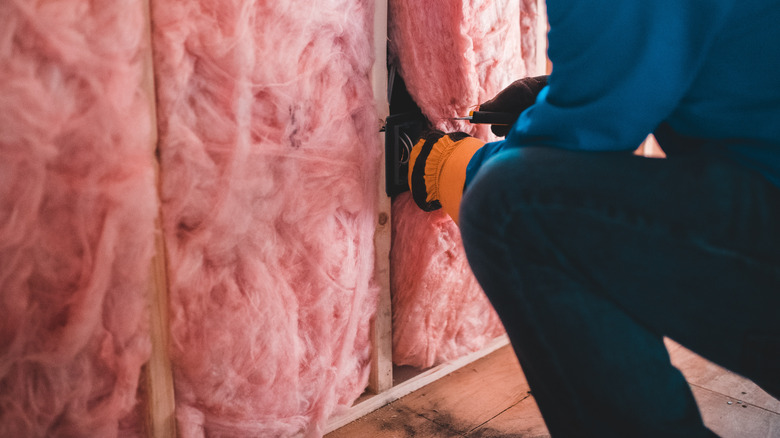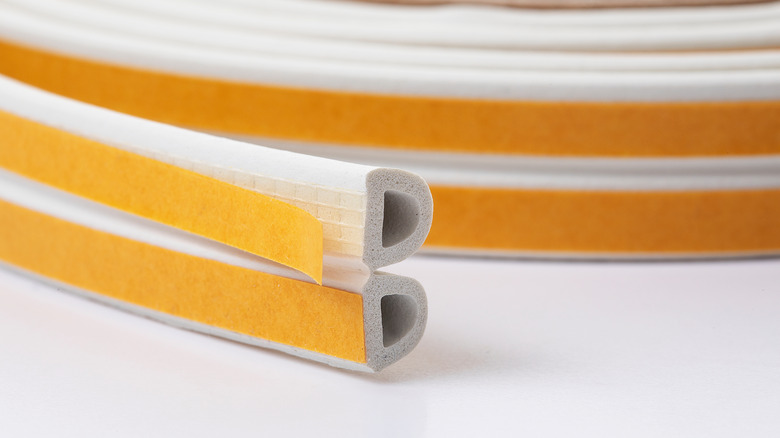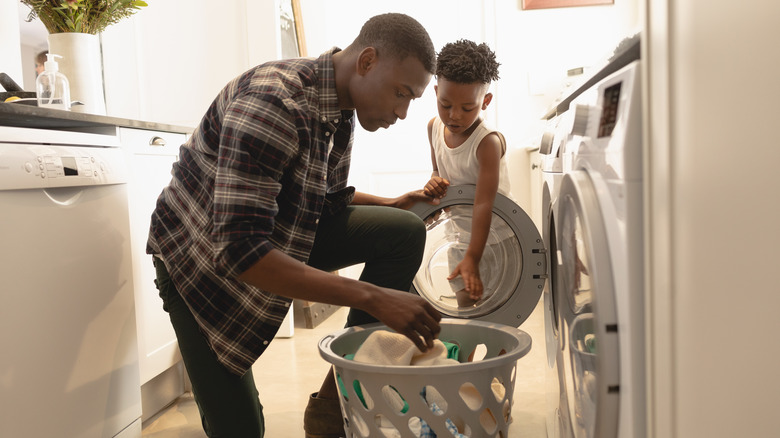Why Your Heating Bill Is Through The Roof
The cold winter season is when heating bills can begin to skyrocket, eating away at your budget. You might be looking to keep your house warm, but those numbers on your bill keep climbing as the temperature keeps dropping. And, it seems this winter, homeowners may be in for even bigger heating bills than usual. As the U.S. Energy Information Administration reports, households are expected to spend a significantly higher amount on their heating this year due to the pandemic. Those who use natural gas can expect to pay anywhere from 22% to 50% more than in previous years, depending on whether the winter in your location is a bit cooler or warmer than average. Those who heat with electricity can expect an average of 6% more on their heating bills. In comparison, the households that choose a less common method to heat their homes, such as propane or oil, can anticipate a bump of 54% and 43% on average, respectively.
While you may grumble about handing over those hard-earned dollars, have you ever wondered why exactly your bill skyrockets in these seasons? Here are five reasons behind that unwanted bump on your bill. If you address some of them, you may be able to shave down that total.
Your furnace is inefficient
Your furnace is the driving force behind getting your house all warm and toasty during the winter season, so if your heating bill is a little higher than you might expect, it might be due to a malfunctioning furnace, according to ClimateCare. It's one of the leading culprits of a high energy bill.
This is often, unfortunately, just something that comes with age. If your appliance is 10 or 15 years old already, there's a good chance you'll be paying more than your friend with a brand new furnace to heat a similar size home. The models get more efficient as technology advances. Additionally, there may be some issue within your furnace that requires it to work harder to keep your house at the same temperature. Fixing any issues with dirt, rust, or worn-out parts will help lower your bill to a more reasonable price point (via Warner Service).
You need to change your HVAC filter
If you are looking for a super quick and relatively inexpensive solution to your high heating bill woes, do one quick thing before calling in a professional — check your HVAC filter. As R & T Services explains, if your air filter is dirty, your heating system has to do a lot more work to generate the same amount of heat. And that added work comes with an added cost.
Since you don't see the filter's dirt level until you pull it out, this can slip by unnoticed. You think you changed it just a month or two ago when in reality, it's been far longer than that, and you're overdue for a new filter. So, as the serious winter chill approaches in many spots, take a quick peek at your filter's state and maybe even place a recurring order for a pack. The simple act of the filter showing up at your door will jog your memory and have you changing it out like clockwork. Also, note that the frequency depends on the exact type of filter you have. According to Thomas & Galbraith Heating, Cooling & Plumbing, a thinner 1 to 2-inch filter should be changed every one or two months, on average, while thicker, 5 to 6-inch furnace filters can last for nine months to a year.
Your insulation isn't ideal
No matter how well your furnace is running or how high you crank up the thermostat, none of that matters if you have poor insulation. All that hot air will escape the minute it circulates through your house. If your heating bill is high, but you don't ever feel warm, you may need to take a look at your insulation, as Warner Service recommends.
Sometimes, the issue is the type of insulation used in your home. Lower quality insulation may have a lower cost initially, but you'll end up paying more on your heating bills due to the inferior product (via ClimateCare). Poor installation can also be a factor, and if you have a sky-high heating bill on the regular, you may want to see if there are any visible gaps that you might want to bring in professionals to fill. Finally, if you feel the insulation in your home is high quality and was installed correctly, take a look for any extenuating circumstances that could have damaged the insulation, such as water leaks or animal infestations. It may take some searching to figure out the exact problem, but once you find it and address it, the reward will likely be a much lower heating bill.
Your windows and doors need weather stripping
If you've double-checked and everything looks good with your furnace, ducts, and insulation, there's one other major area in your home that can be a culprit for sky-high heating bills: The windows and doors. As R & T Services explains, the warm air your furnace is pumping through your home can escape through any cracks or gaps in the doors and windows.
But don't worry. To address this issue, you don't need to switch out every door and window in your home for more energy-efficient options. Instead, consider weather stripping them wherever possible. Weather stripping will prevent the warm air in your home from leaking out and drafts from bringing cool air into your space (via HomeTips). This tip is especially beneficial if there are any areas where you can feel the cool air coming in. There are various options depending on the application method you'd prefer (self-stick or nail-on) and the type of window or door you're looking to weather strip. For many beginners, the flexible plastic strips with adhesive along the back might be the most convenient solution, as they're relatively easy to apply, and they work on a wide variety of materials and shapes.
You're doing way more laundry
This last culprit likely isn't the one adding the most to your heating bill, but every little bit makes a difference — and it's always helpful to know where your energy is being used. As HVAC Solutions explains, many individuals are bundled up in far more layers during chillier times of the year. This means multiple layers of clothing, as well as cold-weather accessories such as scarves, hats, and gloves.
Though you likely aren't washing accessories such as mittens or items like blankets after every use, you still have to toss them in for freshening up a few times throughout the season. In addition to that, you have to wash all those extra layers you're wearing underneath your winter coat regularly. Depending on the size of your household, if you're adding in a handful of extra items for each person every week, that can add up to a serious increase in the amount of laundry done. And all those hours in which your clothes are tumbling through the dryer will have an impact on your heating bill.

